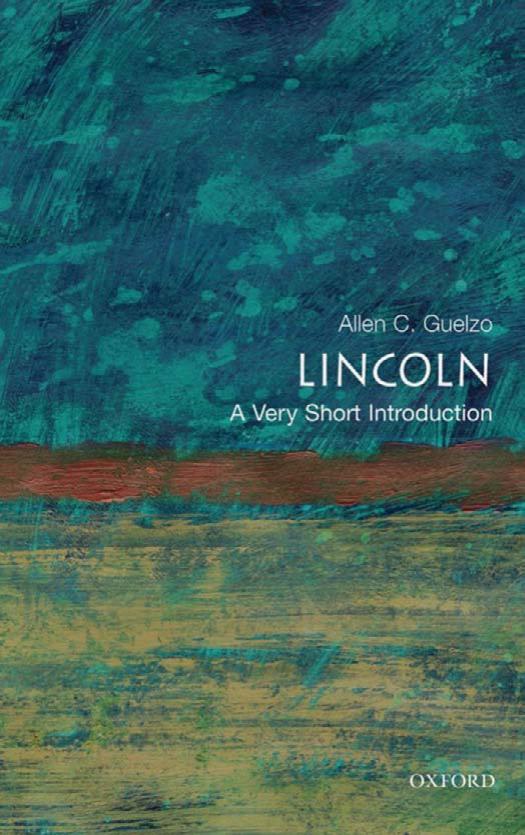Lincoln: A Very Short Introduction by Allen C. Guelzo

Author:Allen C. Guelzo [Guelzo, Allen C.]
Language: eng
Format: epub, pdf
Tags: 19th Century, Biography & Autobiography, Civil War Period (1850-1877), History, Presidents & Heads of State, United States
ISBN: 9780199743742
Google: XcgqWAt1kZUC
Amazon: 0195367804
Publisher: Oxford University Press
Published: 2009-02-05T03:00:00+00:00
Chapter 5
Debate
The failure of popular sovereignty
Contrary to the promises Stephen Douglas made for the popular sovereignty doctrine, almost nothing about popular sovereignty went right after the Kansas-Nebraska Act. Pro-slavery Southerners and anti-slavery “free-soil” Northerners were at once elbowing their way past each other to stake claims in Kansas and guarantee that any territorial referendum on slavery would be won by their side. Before “one Southerner gets ready to ‘tote his traps, plunder, and niggers,’ ” boasted a Cleveland newspaper, “a dozen Northerners will be there ploughing before him”—to which Southern politicians responded by urging pro-slavery emigrants “to protect your own interests . . . with the bayonet and with blood.” The first territorial elections, in November 1854, saw nearly two thousand pro-slavery Missourians cross into Kansas to stuff the ballot boxes and elect a pro-slavery territorial delegate to Congress. When voting for a territorial legislature began in the spring of 1855, more than 4,900 illegal votes (in a territory with only 8,500 settlers) were cast, electing a pro-slavery legislature, which at once began passing a territorial slave code. Free-Soilers responded to this fraud by electing an anti-slavery convention of their own, and sending their own anti-slavery delegate to Congress. This soon came to bloodshed by the end of 1855, culminating in a pro-slavery raid on the Free-Soil stronghold of Lawrence on May 20, 1856, and the butchering of five pro-slavery settlers along Pottawatomie Creek three days later by a New England–born abolitionist named John Brown. Far from guaranteeing a peaceful settlement to Kansas, popular sovereignty had only invited a bloody struggle for dominance.
Yet worse tidings for popular sovereignty were on the way. In March 1857, the U.S. Supreme Court handed down a decision in the appeal of a Missouri slave, Dred Scott, in a freedom suit that had been winding its way through the court system for almost a decade. The slave of an army doctor, Scott had been transported onto federal property, and into residence at Fort Snelling, in free-soil Minnesota; Scott believed that the moment he had been taken onto ground where slavery did not exist, his status as a slave dissolved, and he should be a free man (instead of being returned, as he had been, as a slave to Missouri). The majority opinion, written by a pro-slavery chief justice, Roger B. Taney, and backed by four other Southern justices on the court, dismissed Scott’s appeal as moot. Blacks were never intended by the Constitution to qualify for citizenship, Taney declared, and so Scott had no legal standing to sue in a federal court. But Taney took the additional step of adding that Scott’s appeal was intrinsically meritless, because neither Congress nor legislatures in the territories had the power to deprive slaveholders of a right to their slave property. What the Dred Scott decision did, quite deliberately, was to rule any form of popular referendum on slavery—whether in Congress or in the territories themselves—null and void.
Douglas adroitly sidestepped the Dred Scott decision by insisting that popular sovereignty
Download
Lincoln: A Very Short Introduction by Allen C. Guelzo.pdf
This site does not store any files on its server. We only index and link to content provided by other sites. Please contact the content providers to delete copyright contents if any and email us, we'll remove relevant links or contents immediately.
| U.K. Prime Ministers | U.S. Presidents |
Waking Up in Heaven: A True Story of Brokenness, Heaven, and Life Again by McVea Crystal & Tresniowski Alex(37671)
Empire of the Sikhs by Patwant Singh(22974)
We're Going to Need More Wine by Gabrielle Union(18967)
Hans Sturm: A Soldier's Odyssey on the Eastern Front by Gordon Williamson(18483)
Leonardo da Vinci by Walter Isaacson(13181)
The Radium Girls by Kate Moore(11921)
Tools of Titans by Timothy Ferriss(8216)
Educated by Tara Westover(7941)
How to Be a Bawse: A Guide to Conquering Life by Lilly Singh(7391)
Permanent Record by Edward Snowden(5737)
The Last Black Unicorn by Tiffany Haddish(5558)
The Rise and Fall of Senator Joe McCarthy by James Cross Giblin(5228)
Promise Me, Dad by Joe Biden(5087)
The Wind in My Hair by Masih Alinejad(5033)
A Higher Loyalty: Truth, Lies, and Leadership by James Comey(4843)
The Crown by Robert Lacey(4722)
The Iron Duke by The Iron Duke(4291)
Joan of Arc by Mary Gordon(4013)
Stalin by Stephen Kotkin(3875)
